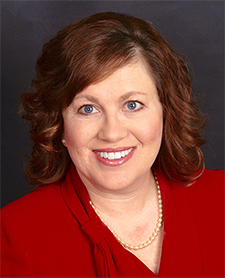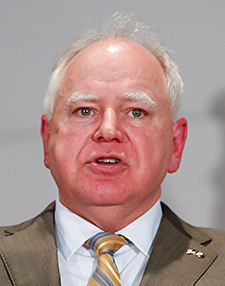How can something that sounds so bureaucratic be so controversial … and important?
At the Minnesota Legislature, that something is officially called the Premium Security Plan, but it usually goes by the only slightly more engaging moniker of “reinsurance,” and it’s what is used by the state to stabilize the individual and small-group health insurance market, which is used by about 170,000 residents.
In short, the state puts money into a fund to help insurance companies cover especially high medical bills, a move that has been credited, sometimes begrudgingly, with decreasing premiums while increasing plan availability.
But because it reflects two very different responses to how to serve a relatively small niche of the health insurance market, it has also become the matter of pointed disagreement between Republicans and DFLers in the Legislature, subject to last minute deal-making that’s often been linked to other, usually unrelated issues.
In 2021, for example, a one-year extension of the program was included in a final agreement between Gov. Tim Walz and legislative leaders that also included a plan to distribute $250 million in bonuses to frontline workers. But while the bonuses have yet to be paid, the reinsurance program was funded, partly with money the state received under the federal American Rescue Plan.
Now, what to do next — continue funding reinsurance, for how long and at what cost — is once again expected to be a major end-of-session conflict at the Capitol.
Why so contentious?
Sold as a temporary tool in 2017 to stabilize the price and availability of certain health plans in Minnesota under the provisions of the federal Affordable Care Act, the reinsurance program remains in place five years later at a cost to the state of $200 million or more a year.
But critics say that what was meant as a temporary solution has become a bridge to nowhere, as more substantive and permanent solutions have not come about. And unless the plan is reauthorized by next month (and funded by the end of session), supporters warn of a return to the high premiums and a lack of plan availability that initially spurred the program’s creation.

[image_caption]State Sen. Michelle Benson[/image_caption]
To DFLers, it’s a bailout.“We’re reinsuring insurers and putting a billion dollars into insurance companies,” said Sen. John Marty, DFL-Roseville.
How it works
A bit more than half of Minnesotans get health insurance through an employer, while an additional one-third get coverage via the state-federal medical assistance program or Medicare for senior citizens. Only about 3 percent of the state’s population — 163,000 people — buy policies from private insurers. As with other insurance policies regulated by the federal government, these plans must cover pre-existing conditions, prescription drugs and substance abuse and mental health treatment. Preventive care must also be covered fully.
The Affordable Care Act featured an online federal marketplace that let buyers shop and check to see how much subsidy they could get, but Minnesota was one of the states that set up its own marketplace: MNsure. Democrats credit the Affordable Care Act with reducing the number of Minnesotans without health coverage by half.
Reinsurance is considered important for the individual market, though it is also used by some small groups of employers to get policies. Simply put, insurance companies that sell policies to individuals and small groups of employers can keep premiums relatively low since they know that they can get help from the state fund to cover especially large medical bills. Rather than charge all policyholders higher monthly premiums to make up for those who cost more, those higher costs are borne by the state fund.
The creation of the program was credited by the state Department of Commerce with settling down a roiled market.
But opponents would rather use those same funds to subsidize premiums for working families and individuals who are either not on medical assistance or are not getting insurance through an employer. Walz has proposed to let more Minnesotans purchase a policy through MinnesotaCare, the state-operated basic health plan aimed at those who don’t qualify for Medicaid but don’t make enough to pay for private insurance. A buy-in bill is moving through House committees, and is included in the governor’s current budget proposal.

[image_caption]State Rep. Zack Stephenson[/image_caption]
“Reinsurance was always meant to be a bridge program. It’s a very effective bridge program and I’ve supported it in the past because it does keep premiums low,” said Rep. Zack Stephenson, the Coon Rapids DFLer who is chair of the House Commerce Committee. “But even the people who created the program didn’t intend it to be permanent. It’s not the most artful solution. We’re basically just buying down insurance premiums.”
Two bills, two approaches
Stephenson is the prime sponsor of the House DFL’s version of reinsurance. It reauthorizes the program, which is required by federal officials before they agree to waive other rules around how the federal government shares costs of coverage. He said he expects the funding needed to extend the program will be part of end-of-session budget negotiations.
But Stephenson’s bill (House File 3717) also includes a $4 million study of the health care and insurance system, with the intent of making reforms that can end reinsurance while maintaining insurance availability and affordability.
Stephenson said just having a policy with premiums that are within reach doesn’t help if copays and deductibles are too high. And advocacy groups that traditionally support the DFL, including TakeAction Minnesota and labor unions such as SEIU Healthcare, the Minnesota Nurses Association and AFSCME Council 5, are pushing for the program to address issues with high copayments and deductibles.
But those changes have not been acceptable to Republicans leaders on the issue. Republicans who control the Senate want what they term a clean bill — reauthorization plus five years worth of funding, around $1 billion.

[image_caption]State Sen. Gary Dahms[/image_caption]
Technically, the bills currently being considered in both the House and Senate reauthorize the program. That is something federal health regulators have demanded soon before they consider giving the state a waiver from some of the provisions of the Affordable Care Act. As one of just two states with a state-operated basic health plan, Minnesota needs that waiver to keep receiving the federal money that flows from the ACA.
But the state’s different system also leads to undesired consequences, specifically the movement of some federal funds from MinnesotaCare into the reinsurance fund. Replacing those lost funds at a cost of $50 million in state general funds is part of the DFL version of the bill.

[image_credit]REUTERS/Eric Miller[/image_credit][image_caption]Gov. Tim Walz[/image_caption]
The GOP bill, Senate File 3472, passed the Senate Monday with five DFL votes. It includes none of the DFL changes that were described by Bentley Graves, a lobbyist with the Minnesota Chamber of Commerce, as “extraneous provisions” that could endanger passage.
Rep. Tina Liebling, a Rochester DFLer who is chair of the House Health Finance and Policy Committee, told the chamber lobbyists she doesn’t want the bill at all, “so if you think the House is gonna pass it, you should possibly get behind some of the other measures that are traveling with it.”






When the CEO of UnitedHealth is willing to work for a total annual compensation of, say, $125,000, then I’d support reinsurance. Otherwise, it’s just a taxpayer-paid subsidy of private, for-profit companies and their top executives, who will merely add the subsidy to their corporate and personal bottom lines, then charge individual ratepayers more anyway, claiming “inflation,” or “cosmic dust,” or “poltergeists.”